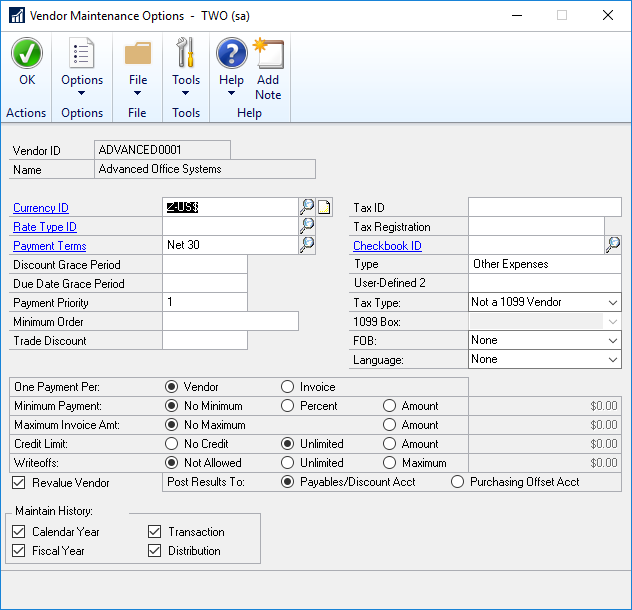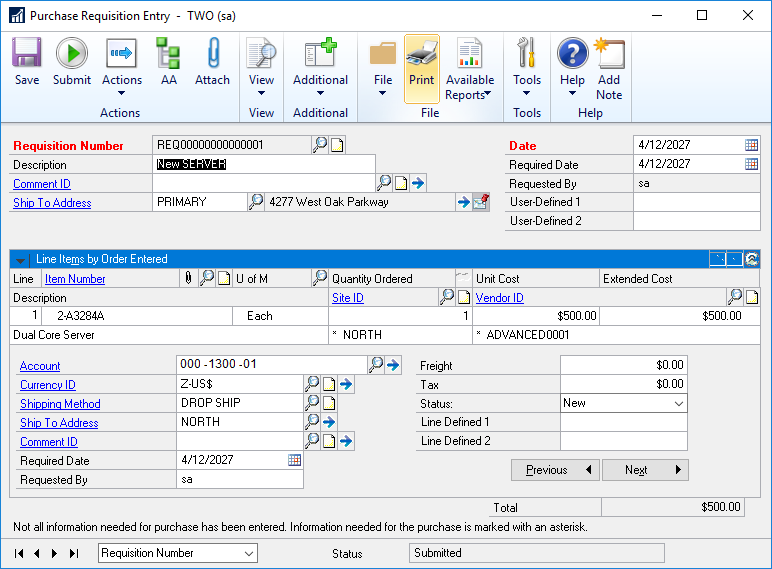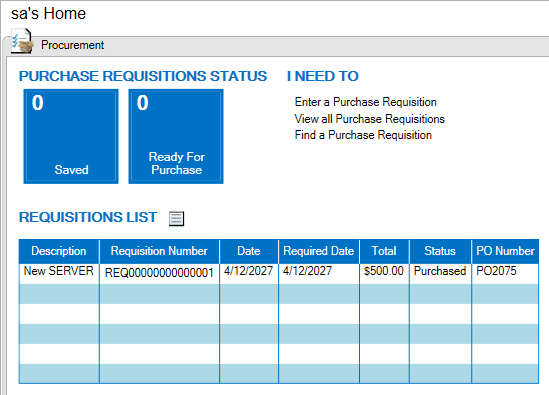 We have a couple of small clients who are hosting Microsoft Dynamics GP on SQL Server Express; this is a supported platform, but does not include SQL Server Agent. This means that backups cannot be automated in SQL Server as it is the Agent which provides this functionality.
We have a couple of small clients who are hosting Microsoft Dynamics GP on SQL Server Express; this is a supported platform, but does not include SQL Server Agent. This means that backups cannot be automated in SQL Server as it is the Agent which provides this functionality.
However, there are still ways in which backups can be automated; one way is to create a DOS batch file and execute it using Windows Scheduler.
The below is a SQL statement which can be executed to generate the DOS batch file commands to backup all of the databases for a Microsoft Dynamics GP implementation.
/*
Created by Ian Grieve of azurecurve|Ramblings of a Dynamics GP Consultant (https://www.azurecurve.co.uk)
This code is licensed under the Creative Commons Attribution-NonCommercial-ShareAlike 2.0 UK: England & Wales (CC BY-NC-SA 2.0 UK).
*/
DECLARE @SQL NVARCHAR(MAX) = 'echo off
cls
echo -- BACKUP DATABASE --
set SERVERNAME=2018SQL1\GP
set DATESTAMP=%DATE:~-4%-%DATE:~3,2%-%DATE:~0,2%
set SYSTEMDATABASENAME=DYNAMICS
set BACKUPFILENAME=C:\SQLServer\Backup\%SYSTEMDATABASENAME%_%DATESTAMP%.bak
echo.
sqlcmd -E -S %SERVERNAME% -d master -Q "BACKUP DATABASE [%SYSTEMDATABASENAME%] TO DISK = N''%BACKUPFILENAME%'' WITH NOFORMAT, INIT, NAME = N''%SYSTEMDATABASENAME%-Full Database Backup'', SKIP, NOREWIND, NOUNLOAD, STATS = 10"
echo.'
SELECT @SQL = @SQL + STUFF((
SELECT
'
set DATABASENAME=' + RTRIM(INTERID) + '
set BACKUPFILENAME=C:\SQLServer\Backup\%DATABASENAME%_%DATESTAMP%.bak
sqlcmd -E -S %SERVERNAME% -d master -Q "BACKUP DATABASE [%DATABASENAME%] TO DISK = N''%BACKUPFILENAME%'' WITH NOFORMAT, INIT, NAME = N''%DATABASENAME%-Full Database Backup'', SKIP, NOREWIND, NOUNLOAD, STATS = 10"
echo.'
FROM
DYNAMICS.dbo.SY01500
FOR XML PATH(''), TYPE).value('.', 'NVARCHAR(MAX)'), 1, 1, '')
SELECT @SQL
If you are using a named system database, the two highlighted sections need to be amended.
To run the script, set the output to file and then copy and paste the resulting script into a file with the .bat extension; this batch file can then be scheduled to run automatically using Windows Scheduler.
 Since the release of Microsoft Dynamics GP 2018, on the 1st December 2018, we have been busy with a few upgrade projects for clients. Our standard recommendation is to have a standalone test system for performing UAT and this means backing up and restoring databases.
Since the release of Microsoft Dynamics GP 2018, on the 1st December 2018, we have been busy with a few upgrade projects for clients. Our standard recommendation is to have a standalone test system for performing UAT and this means backing up and restoring databases.








